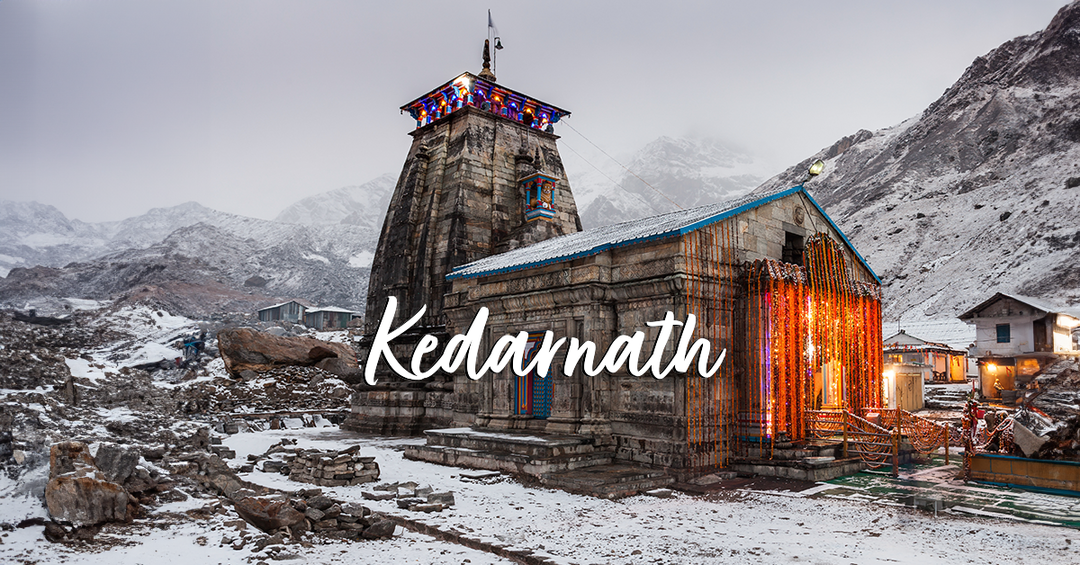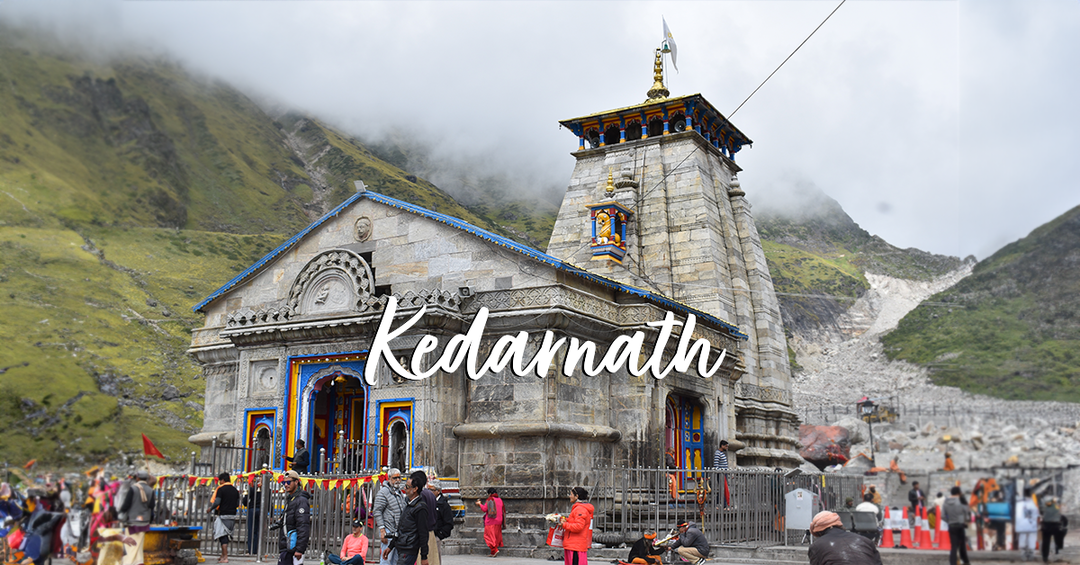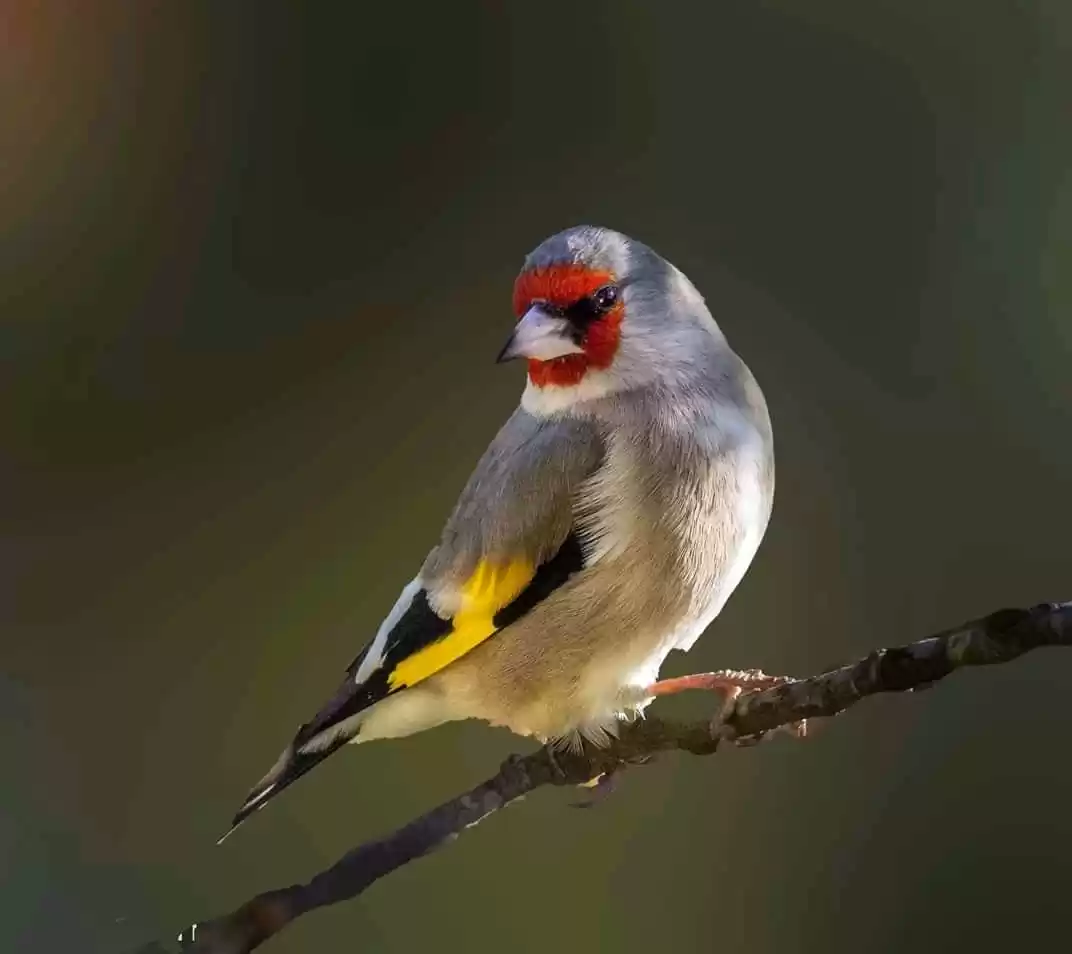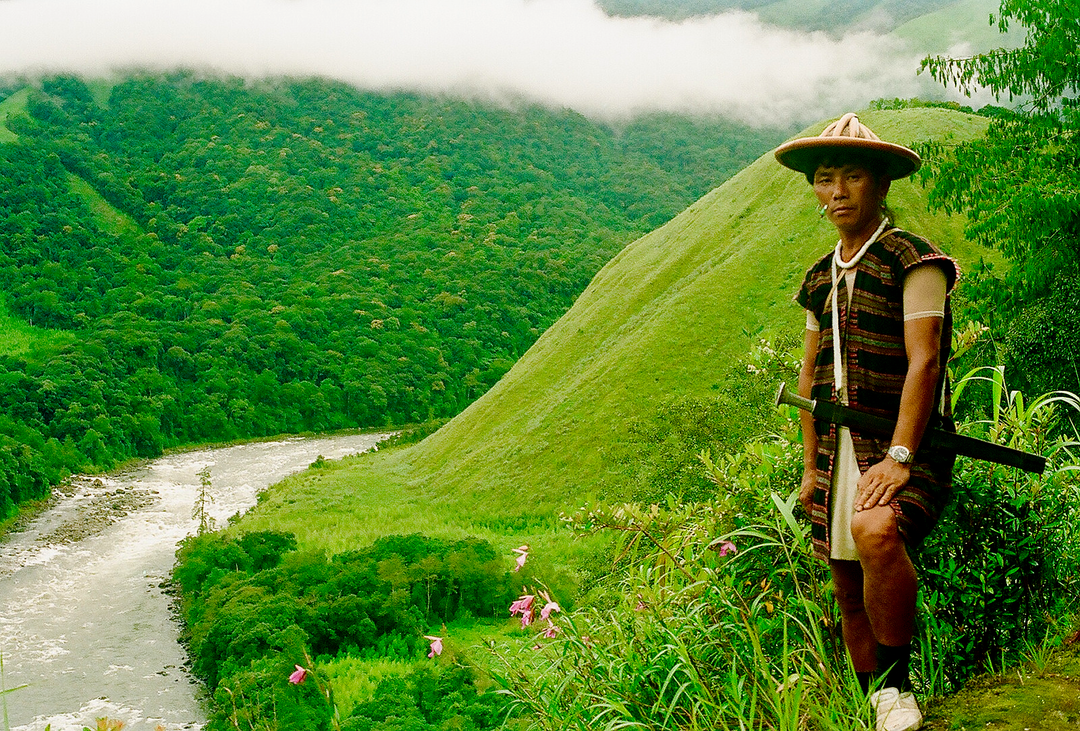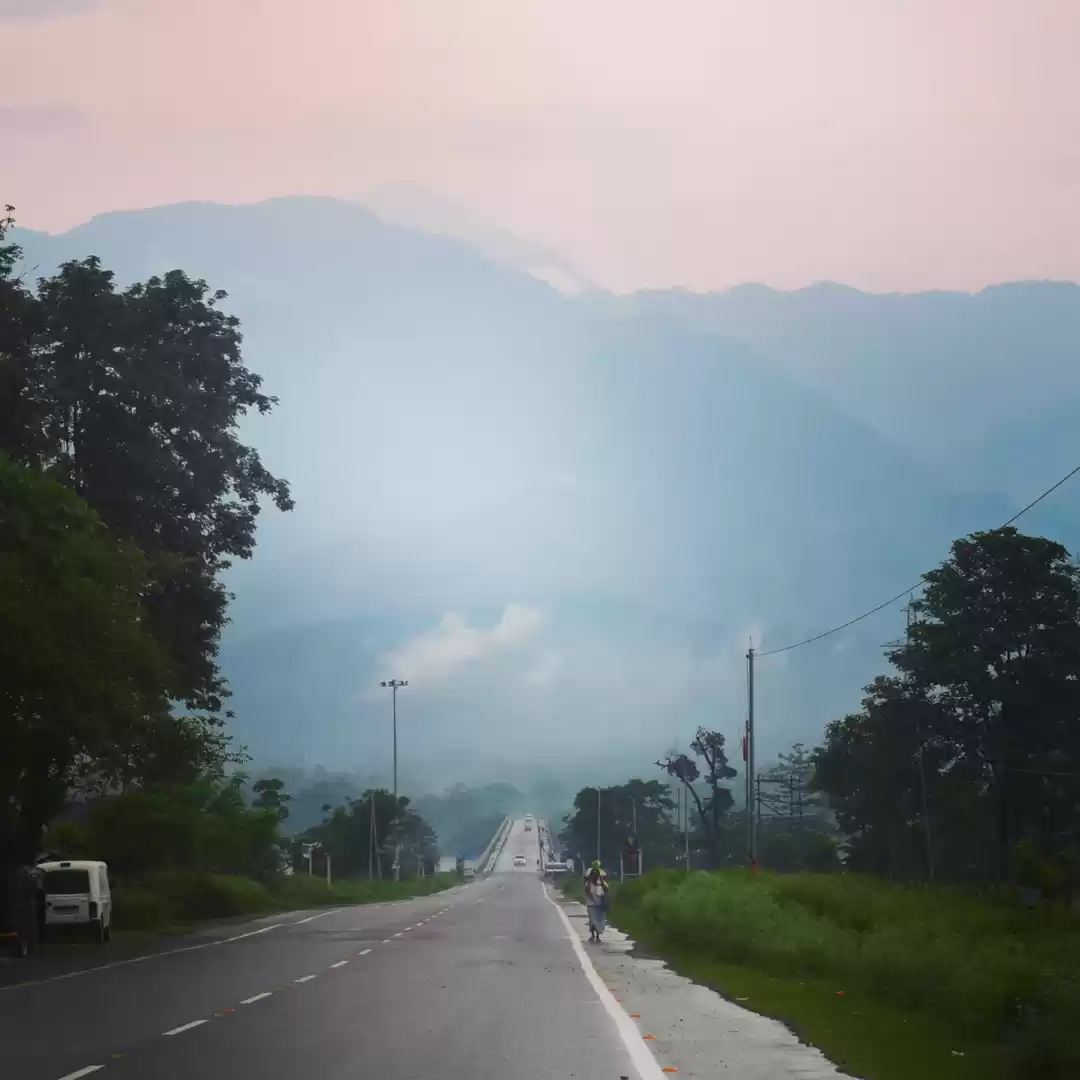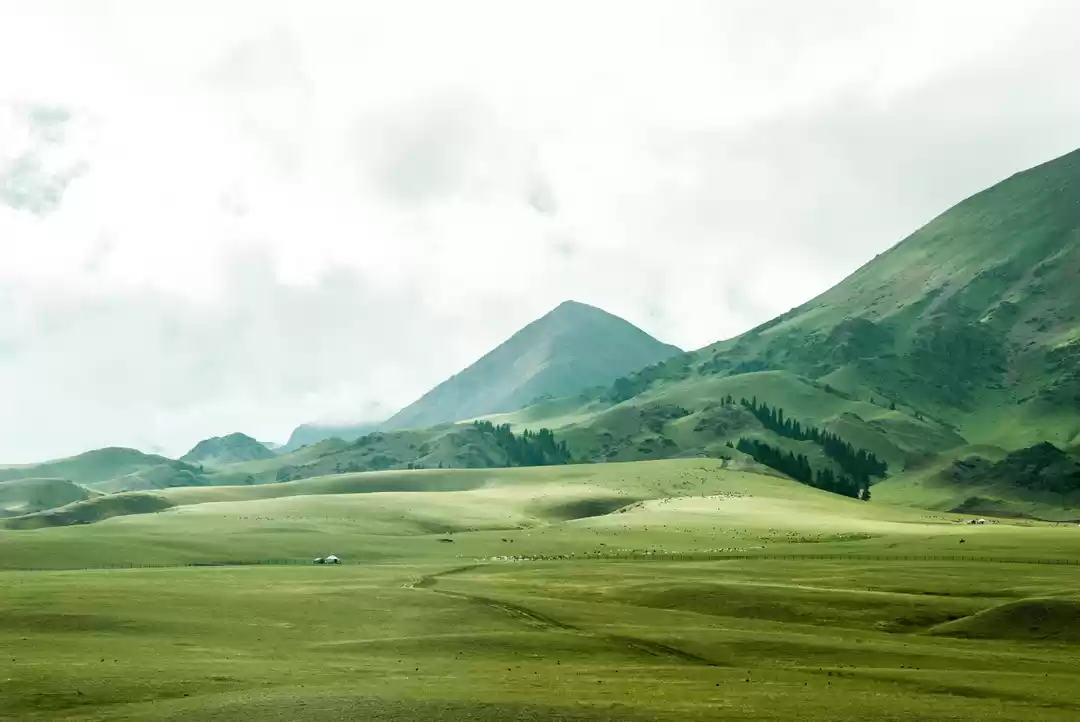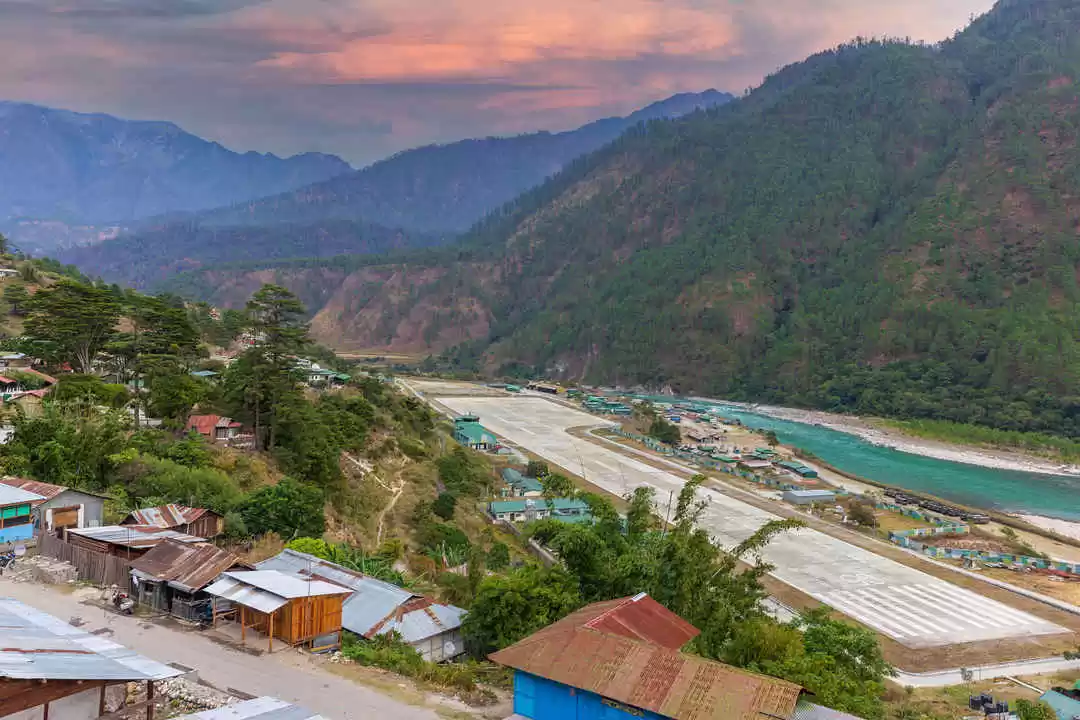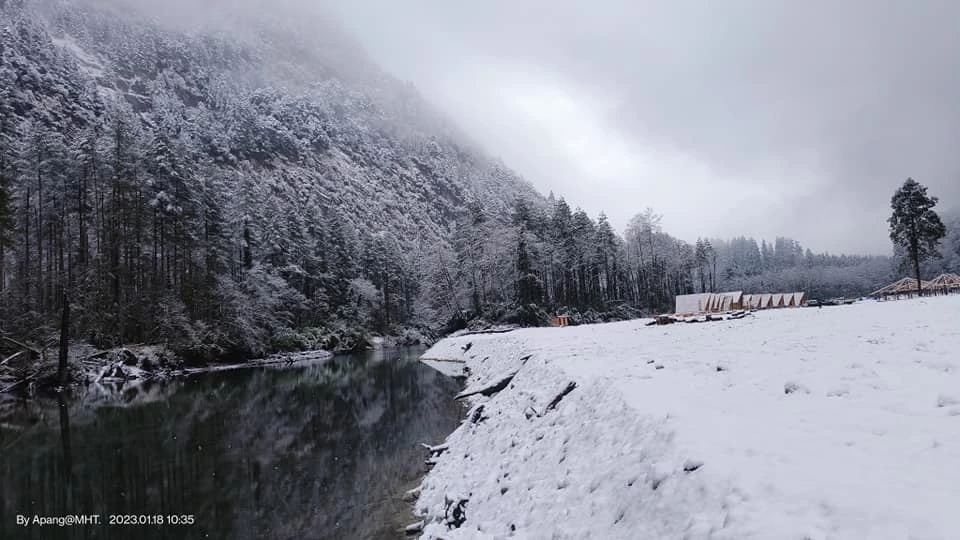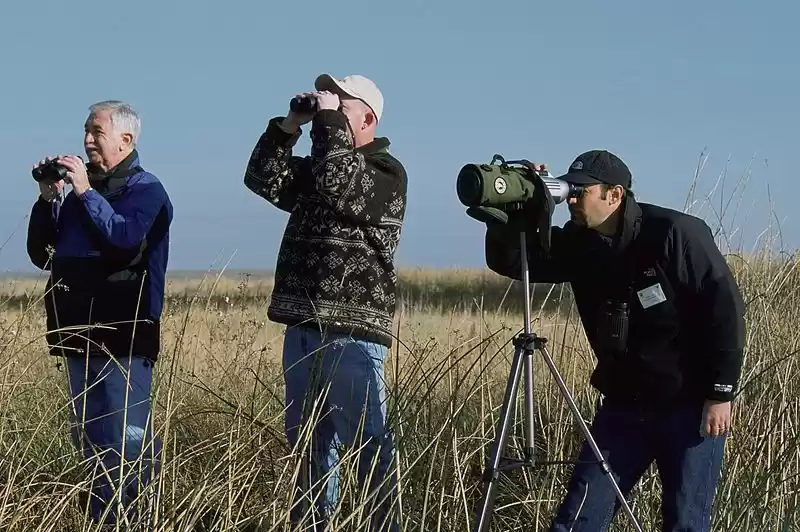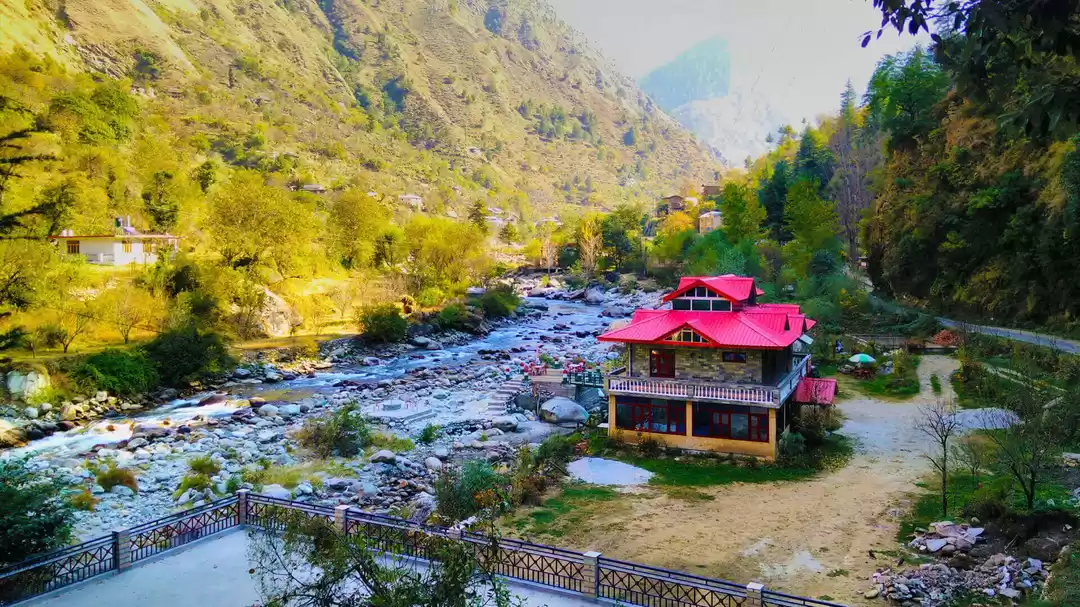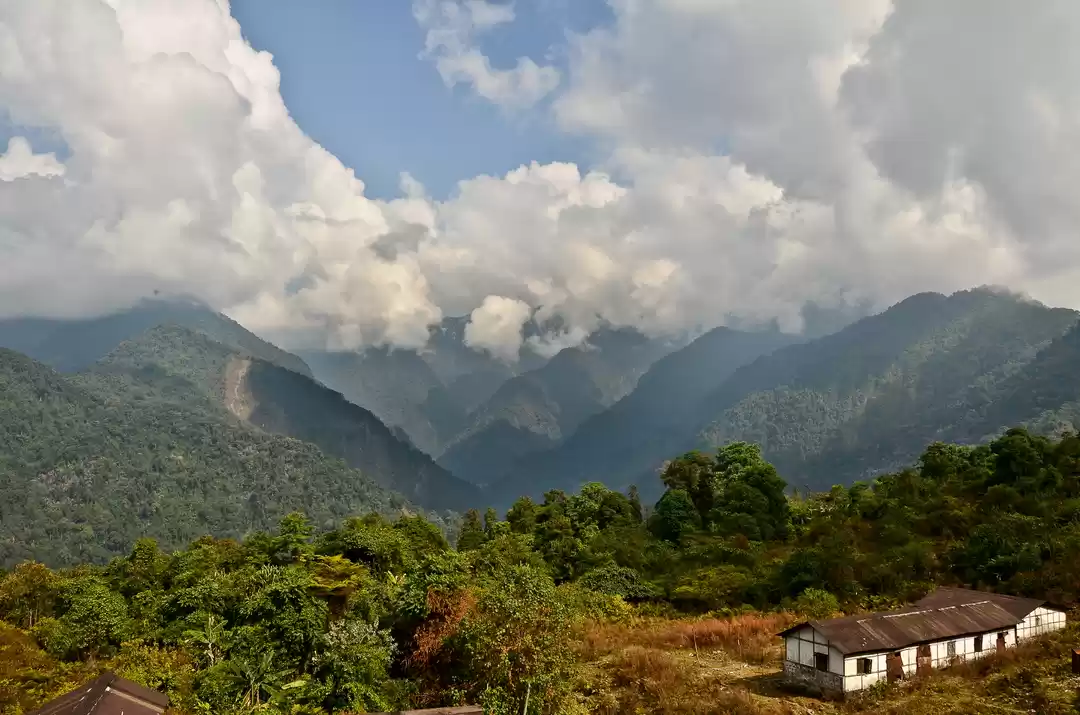
‘Shhh! silent…keep quite’, Binanda, our bird guide whispered. We stood still…a lot of birds were hopping near us enticing to take photograph….we quivered but Binanda insisted. No avail….had to play childhood’s ‘Statues’ game- Binanda as the ‘curator’. Such ‘Statues’ game usually gifted us with glimpses of some ‘Bhalo Pakhi’ (exotic bird) to add in our life list. This is how, we - seven-4 from Delhi and 3 from Kolkata, spent our mid-April’s birding tour in Mishmi hills. After 12 months’ confinement due to covid situation, this 4-days tour for finding some endemic birds ushered a new hope and resilience all around. Some of us are veterans, experts and novice like me but Mishmi hills has something to everyone to fatten life list or gain some new experience.
Mishmi Hills in central Arunachal Pradesh are a southward extension of the Great Himalayan ranges and its northern and eastern parts touch China. Unscathed tropical forests, alpine meadows, shrubby woods, bamboo groves and sloping grasslands- all so deeply co-exists with different hues of blue, yellow and emerald often interspaced with creeping fogs makes these hills mystical. Cerulean skies seem to emerge out the rolling hills. Trees draped with giant creepers and orchids flower profusely high up on trees. Decorative ferns not only carpet the forest floor but sprout like umbrellas at the top as well. Gargling streams leaping from top, few far-flanged houses and Idu-Mishmi tribes with their colourful attire, grazing ‘Mithum’, chirping birds and hauling hoolock gibbons make these hills a perfect Shangri-La. Mishmi Hills are most bewitching part of the Mehao Wildlife Sanctuary. In Anoko Mega’s documentary, Mehao Wildlife Sanctuary is aptly described as “Real Ocean of green paradise on Earth”. Stepping into Mishmi hills is a pupil-dilating experience, a riot of sights, sounds and smells quickly leading to sensory overload.
Mayudia Pass, which is about 56 km from Roing (district HQ of Lower Dibang Valley), is the highest point of the Mishmi hills. "Mayodia" is a Deori-Chutia word – means a "shrine of mother goddess". "Mayo" means "mother goddess", "Di" means "water" and "Ya" means "land". During winter it receives snowfall, which attacks domestic tourists who brave the biting cold to enjoy the snow fall. The hills harbor around 6,000 plant species, 100 species of mammals and over 680 bird species. Among the bird species-some are endemic and are sighted in the Mishmi hills regularly, which are very difficult to find elsewhere in other parts of Northeast India. Mishmi hills are extremely attractive for nature lovers, especially birders, ornithologists and researchers around the world.
As we crossed Deopani river at Roing, myriad shades of beauty started unfolding in each of numerous bends of Mishmi hills’ narrow ascending roads. Feathered models started vying with soul entwining beauty, grace and etherealness. Shrikes, tits, bar-wings, fulvettas, babblers, warblers, parrot bills, minivets - all are present….hopping, chirping and in next moment vanishing into the dense vegetation beneath. Acclimatizing eyes for birding in Mishmi Hills take some time, leave alone photographing them.
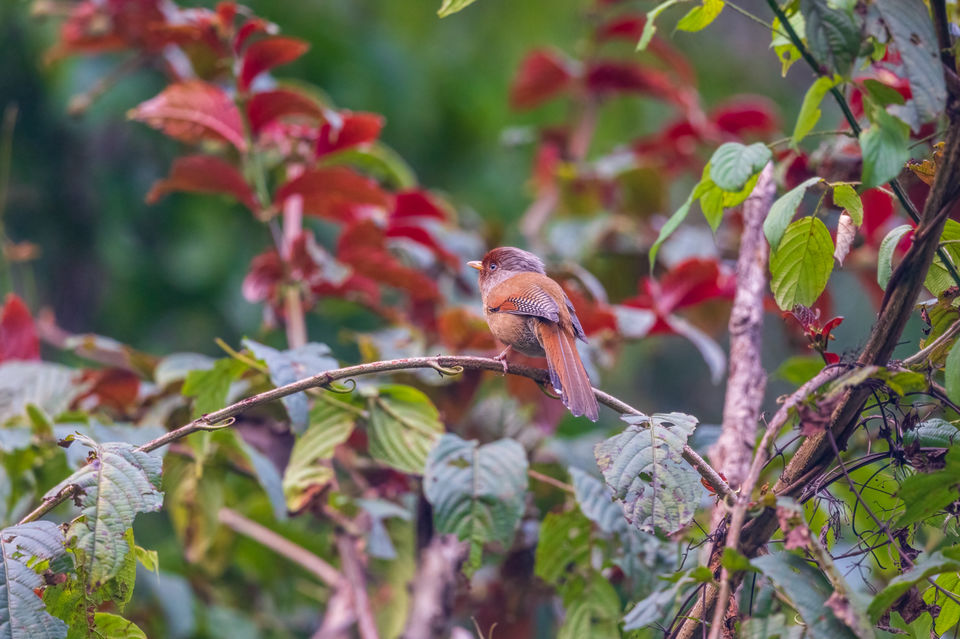
Most species are either skulkers or rapidly darting in the dense vegetation. Though the diversity is in plenty but bird-watching or photographing is extremely hard….the response time has to be very fast. Yet Mishmi Hills are fantastic and simply magical… In Mishmi hills mainly birding is limited to Roing - Huli - Anini road only or at the best a few meters walk up or downhill from the narrow road.

Soak in the breath-taking surroundings all around - the narrow Roing - Anini road that wounds round the Mishmi hills-rose and fell and twisted down has been enough to pound the heart excitedly and imagination to soar. About 10 species of fulvetta are recorded in India. Excepting the Brown-cheeked Fulvetta, rest 9 are restricted to hills of North-eastern India only.

This Ludlow's fulvetta or Brown-throated fulvetta (Fulvetta ludlowi) was found at 2634.20 m MSL. It is usually found in Nepal, Bhutan, China, Myanmar and north-east India. Though it is listed as least concern in IUCN Red List but its’ population is decreasing. The dark-streaked chestnut crowned bird Rufous-winged fulvetta (Schoeniparus castaneceps) is pretty common in Mishmi hills.

In late afternoon at about 1645.5 msl., ‘Something great!’, said Binanda (our bird guide) pointing finger below a dark bush, Surojit (our tour manager) whispered ‘Bholo Pakhi’ (exotic bird). Coupled with low light conditions and bad weather, it is frustrating to focus it amongst the dense undergrowth…ultimately got this, the Cachar or Manipur Wedge-billed Babbler, (Sphenocichla humei) is a near threatened species in the IUCN Red List, occasionally found in Mishmi Hills, Assam and it’s nearby. It is becoming rare due to its’ habitat loss.

Yet another skulker-the Bar-winged wren-babbler (Spelaeornis troglodytoides) was found at 2561 m MSL. But here showstopper is the Mishmi Wren babbler or rusty-throated wren-babbler (Spelaeornis badeigularis), which is endemic to Northeast India. Since it first recording in 1947, very little was known till 2006, when it was rediscovered in Mishmi hills. Though undergrowth skulkers but this tiny bird is not shy. They are very vocal and often approach very close. This species is listed as Vulnerable on the IUCN Red.

In midst of chirping of warblers and sunbirds, suddenly high pitched call of Himalayan cutia (Cutia nipalensis) resonated- found this beautiful bird calling under shed of canopy of the moss-covered trunk. Primary, found in subtropical or tropical moist montane forest of eastern Himalayas in altitudes from 1500 to 2500 meters.

Amidst of these evergreen hills, the outline of holy ‘Athu popu’ tucked in mighty Himalayan range, strides away into an immensity of sky. In this green background this golden babbler (Cyanoderma chrysaeum) appeared just as flash of gold...It ranges from the foothills of the Eastern Himalayas to Southeast Asia and inhabits subtropical lowland and montane forests. The bird is quite vocal and inquisitive.

As gift of Binanda's ‘Statues’ game found this ‘Red-headed Murgi’ (red-headed chicken) which sped past on the road. This is Blyth’s tragopan, (Tragopan blythii), commemorates with Edward Blyth (1810–1873). Though distributed in many different areas including Bhutan, north-east India, north Myanmar to south-east Tibet, and also in China but recorded as vulnerable species in the IUCN Red List.

Beautiful nuthatch (Sitta formosa) is yet another cute bird found hopping on moss-covered trunks of road side trees. The beautiful nuthatch has highly distinctive plumage. Its upperparts are black and azure, and it is orange on the underparts. The bird is large as compared with other members of the genus Sitta. This species lives in the eastern Himalayas, and has been reported in several scattered sites across Southeast Asia, in the northwest of Vietnam and in central Laos. Its range stretches west into the northeast of India.

Plan Your Trip:
Getting There: Air: Dibrugarh (204 km; almost 6.5 hrs) is the nearest airport of Mayudia Pass, with direct flight connectivity from Kolkata, New Delhi and Guwahati; Rail: Tinsukia (NTSK) (194 km; almost 5 hrs) is nearest railhead of Mayudia Pass, with direct rail connectivity from Howrah, New Delhi, Mumbai, Bengaluru and Guwahati. Road: The Mayudia Pass area can be approached by crossing the 9.15 kilometers long Bhupen Hazarika bridge from Dibrugarh or Tinsukia. The recommended access is Dibrugarh - Tinsukia – Sadiya Ghat. Roing town is 65 kms from Sadiya Ghat. Mayudia is 56 kms from Roing and Hunli is another 44 kms on Roing - Hunli - Anini road (NH-313). Though the road is black-topped and motorable but narrow with countless hair-pin bends.
Best Time To Visit: November to May but as rhododendron and orchid blossoms during March and April-this is the best time to visit for birding.
Stay: In upper Mishmi hills, few options are available which are most basic. In Hunli an Inspection Bungalow exists but difficult to book due to local demands. Just 4 km downhill to Mayudia Pass, Coffee House (₹ 2,000/- per room on EP; Mobile: 7002196911, 9774748828, 7002189756) is only option to stay. In lower Mishmi hills, in and around Roing town, various budget to luxury options are available.
• Dibang Valley Jungle Camp: ₹ 6,000/- per cottage for double occupancy (AP) (09862829416);
• Mishmi Hill Camp, Ezengo ₹ 5000/- per cottage for double occupancy (AP) (098628 56981; pulujb@gmail.com)
Yatri Niwas, Ezengo (07085687349), D. S. Hotel,Roing (9206348487), Hotel Mimu, Lower Market, (08787448142/ 03803-222698) and Hotel Zeemuko, Lower Market, (07637970362) are other available options.
Good To Know:
• ATMs, restaurants, pharmacies, convenience stores, petrol bunks and hospitals are available in Roing town. However, being away from the big cities like Tinsukia or Dibrugarh, in Roing the facilities may not be available round the clock, so plan ahead.
• In Mishmi hills mobile phone network does not work. In Coffee house electricity is provided for very limited hours in night through generator. Keep always sufficient spare batteries and chargers.
• All major mobile phone networks provide network coverage in Roing but data connectivity is not reliable.
• As fuel pump is not available in Mishmi hills area, sufficient fuel stock may be made at Roing.
Various tour agencies are offering Mishmi hills tour packages based on travel interest. The A1 Travel Management, Roing (09436095632/ 08794724401), Ichhe Dana "Wings of Desire", Kolkata (09007820752/ 90078 20752), North East Birding Tours (07002196911/ 9774748828/ 7002189756), Arunachal Birding Tour, New Delhi (09999030-436 / 09911336281) are available options.
Budget Per Person: A three-night stay at upper Mishmi Hills and one-night stay in lower Mishmi hills is highly recommended for enjoying its wildlife, natural beauty and culture. Since it is geographically challenged area, group travel is highly recommended for sharing cost and other logistics. Various tour agencies are charging ₹ 6500 to ₹ 7500/- per day for birding tour of 3 to 4 days in Mishmi hills for group of minimum 3-4 persons from/to Dibrugarh/ Tinsukia inclusive of accommodation, meal, car and bird guide charges.








